Stream Habitat Restoration Projects
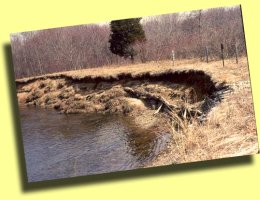
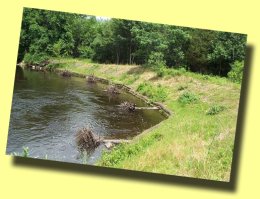
A primary responsibility of the DEEP Inland Fisheries Habitat Conservation and Enhancement Program (HCE) is to restore and enhance instream fish and riparian habitats that have been altered or degraded by human activities. Habitat degradation comes in many forms, some obvious, some not. For example, Figure 1 shows an example of an extreme man-made habitat alteration. This stream has been straightened, called channelization with its channel being lined with concrete. It has been so drastically altered that its only function is to protect property from flooding. The stream has no ecological value and it certainly does not contain any viable fish habitats.
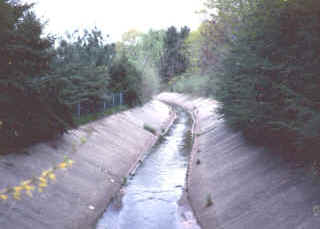
Figure 1. Example of channelization
Eroded streambanks represent another habitat problem seen in Connecticut (Fig. 2). As streambanks are eroded, soils that originate from the streambank are transported into the stream channel causing sedimentation of valuable fish habitats. Sedimentation, the process of forming and depositing sediments, can fill-in important pool habitats that are used by fish as hiding and resting areas. Sedimentation of shallow water, riffle habitats can reduce population levels of aquatic insects, the basic food source of fish in streams. Bank erosion can cause the loss of vegetation that can shade a stream and cool water temperatures. Without shading, sunlight can increase surface water temperatures, negatively affecting survival of coldwater fish such as trout.
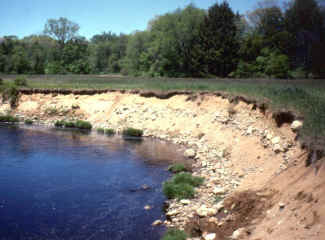
Figure 2. Example of streambank erosion
Another common but not so obvious problem in Connecticut streams is channel overwidening (Fig. 3). As our watersheds have been become more developed, there has been an increase in the amount of impervious surfaces, especially in urban/suburban areas resulting in changes to a watershed’s hydrologic regime. Typical hydrologic changes are more frequent peak flow events and extreme low flow periods. This channel type is characterized by a wide channel with shallow water depths that lack a well-defined low flow channel. Overwide channels offer very little useable habitat for fish during crucial times of the year when water levels drop. Poor fish habitat leads to decreased fish population levels and decreased fish species diversity.
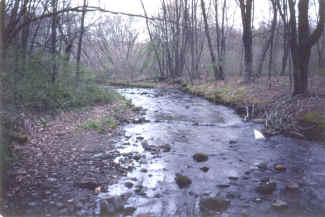
Figure 3. Example of overwidened channel
Given the myriad man-made alterations to rivers and fish habitats prior to the formation of environmental protection organizations such as the DEEP, opportunities abound to restore and enhance riverine habitats in Connecticut. HCE program fisheries biologists regularly identify streams with poor fish habitat and develop projects to restore and enhance fish habitat. While our program lacks dedicated funding to restore and enhance stream and riparian habitats, we do obtain funding from State and Federal grant programs. Often times, we are provided with materials, assistance and in-kind services from municipalities and non-governmental organizations that provide labor and equipment to complete projects. Our projects vary in size from a one-day project planting vegetation to stabilize a streambank with volunteers to a several week project installing fish habitat structures using heavy construction equipment. Thus, there are many avenues to complete both large and small habitat projects in Connecticut.
Stream restoration projects result in many tangible aquatic resource and human benefits.
Briefly, restoration can increase the quantity and quality of fish habitat. Research has shown that “more” and “better” fish habitat directly correlates into healthier and more diverse fish populations, which in turn leads to increased recreational fishing opportunities for anglers. Finally, projects that stabilize streambanks and prevent serious erosion and sedimentation will improve water quality. All Connecticut citizens benefit from improved water quality!
HCE Biologists are available to provide free on-site consultation to towns, non-governmental organizations and others regarding stream restoration opportunities.
For more information contact: brian.murphy@ct.gov, 860-424-4142 or matthew.goclowski@ct.gov, 860-424-3926
To learn more about stream habitat restoration projects in Connecticut, please see the following documents.
Restoration Projects
W. Branch Farmington River, Barkhamsted
Willimantic River, Tolland/Willington
Fact Sheets and Related Information
Inland Fisheries Division Riparian Policy
Inland Fisheries Division Riparian Position Statement
Large Woody Debris (LWD) Fact Sheet
Content last updated March 2020

